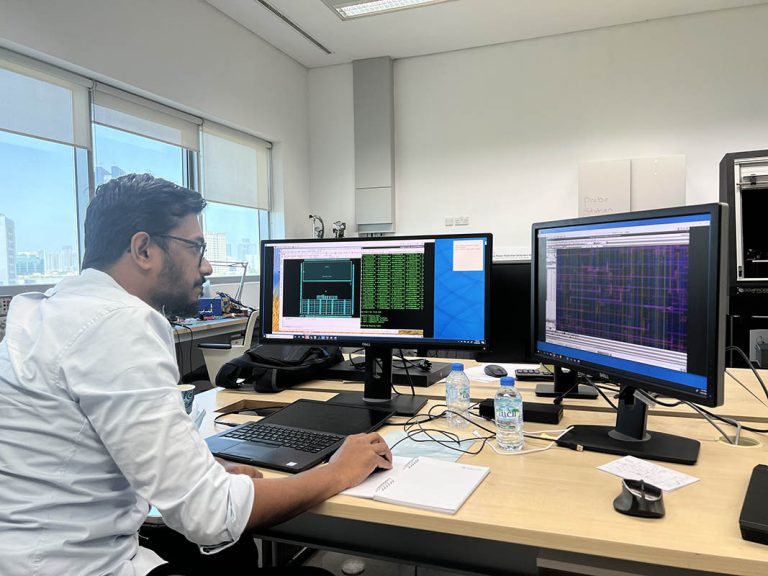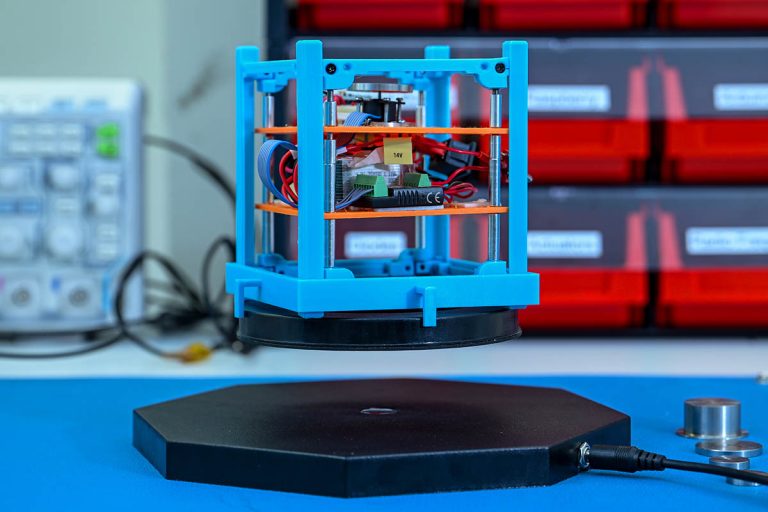Unlocking the secrets of regenerative medicine
Peter Corridon talks about how his research into organ function has been helped by camels; and his quest to develop a fully functioning bioartificial kidney, so that animal tissue is no longer needed.
When Peter Corridon relocated his research on kidney physiology from the United States to Abu Dhabi in 2019, he faced an unusual challenge. Studies worldwide typically use pigs to analyze organ function because of their similarity in size to human organs. “But we don’t have a lot of pigs in the Middle East,” he says.
After a few phone calls and a visit to the local slaughterhouse, Corridon—assistant professor of immunology and physiology in the College of Medicine and Health Sciences at Khalifa University—secured a steady supply of sheep kidneys. He would later adapt the research further to look at organs taken from local camels. “Given the lack of resources a camel has, it should not be able to stand up and function. It really shouldn’t. So, their kidneys are special,” he says.
Following his PhD studies at Indiana University, Corridon went on to work at Wake Forest University in North Carolina under James Yoo and Anthony (Tony) Atala; revered figures in regenerative medicine. “They are highly respected. You just say Tony’s or James’ name and doors open for you,” Corridon says.
For Corridon, the opening came at Khalifa, where he now specializes in how blood vessels grow and behave. He has also expanded his expertise to include work on the eye. One research interest, for example, is to discover why cell signaling encourages blood to flow in the kidney, but restricts blood flow in parts of the eye, including the cornea.
“You cannot have blood vessels inside your cornea, you become blind,” he explains. “So, for us, it’s all about learning how all these mechanisms work.”
Despite the diversity in the sources and types of organs used in his research, there is a common objective: to better understand and treat conditions in people. And even the unusual camel could offer useful insights in regenerative medicine.
“Again, technically speaking, a camel should have a lot of ocular diseases. It’s in the desert being hit with dust, with this heat, it should be blind,” Corridon says. “But it’s not. And we’re trying to figure out some of the things that are inherent in the camel that can help maintain eyesight for us. They have a very special oval-type red blood cell. It’s not like ours and may hold secrets to help us overcome debilitating diseases.”
Another of Corridon’s long-term research goals is to develop a fully functional bioartificial kidney. This would help address the growing need for kidneys for transplants and provide an animal-free platform for lab studies of the organ.
Corridon’s research includes a technique called decellularization, which removes the native cellular components from human and animal kidneys leaving the extracellular matrix scaffold of the original organ. These can then be used as templates to build bioartificial tissue on and to monitor blood vessel growth.
Was establishing an academic career in the United Arab Emirates difficult? The heat can be overpowering, he says, but that is compensated for by the warmth of the welcome he has received. “Honestly, these people here have been the best human beings I’ve met,” Corridon says. “They’re just so welcoming and happy to have you. They’re just really good people.”




